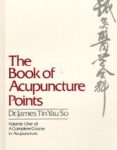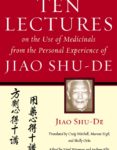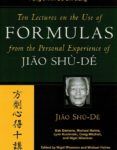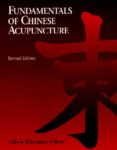Overview
In Chinese medicine there are four classics that all serious students are required to study. These include the Classic of Internal Medicine (Nei Jing), Treatise on Cold Damage (Shang Han Lun), Synopsis of the Golden Chamber (Jin Kui Yao Lue), and Warm Disease Theory (Wen Bing Xue). Warm Disease Theory is the most modern of the four classics. Although referred to as a classic, in this context, the term “classic” means an area of classical study rather than a single classical text. Even though there are numerous references to warm diseases in very ancient texts, warm disease was not developed as an independent system until the Qing dynasty. There were several schools of warm disease, dating from the Ming and Qing dynasties, but until the time this text was written there had never been an attempt to integrate their ideas into an overview. The five medical experts who most significantly influenced the development of Warm Disease theory were Wu You Ke, Ye Tian Shi, Xue Sheng Bai, Wu Ju Tong, and Wang Meng Ying.
The first of these, Wu You Ke, lived in the Ming dynasty. He put forward the theory of pestilence qi (li qi) which explained the role of certain infectious factors in the etiology of communicable diseases. His was the first theory to assert that warm pathogens enter the body through the mouth and nose. He published these ideas in his Treatise on Acute Epidemic Warmth (Wen Yi Lun). The other four medical experts all lived and wrote during the Qing dynasty. Dr Ye Tian Shi introduced the theory that warm diseases develop and transmit through four aspects, namely the defense, qi, construction, and blood aspects. His lectures and teachings were edited by his disciples and published in the Treatise on Warm Heat (Wen Re Lun). Xue Sheng Bai concentrated on discussing damp-heat disease factors. He clearly explained that damp-heat usually occurs from a combination of external yang brightness and internal greater yin factors affecting each other. He published his ideas in his Detailed Analysis of Damp-Heat (Shi Re Tiao Bian). Dr Wu Ju Tong expanded on the ideas of Dr Ye Tian Shi by developing a system of differential diagnosis based on the pathological changes in the triple burner. He summarized his findings and published them in his Detailed Analysis of Warm Diseases (Wen Bing Tiao Bian). Dr Wang Meng Ying developed insights on the cause of warm fevers, their symptoms, and their treatment methods, by applying the theories set down in the Classic of Internal Medicine and Treatise on Cold Damage to the views of his renowned contemporaries. He published his ideas in several books, the most important of which is Warm Disease Latitudes and Longitudes (Wen Re Jing Wei).
However, even these great Ming and Qing dynasty doctors of warm disease, on whose works this text is based, only had partial insights; their views were relatively fragmentary. Warm Disease Theory is the first text to integrate the views of every school, the first to undertake a comprehensive discussion of the foundations of warm disease theory and the clinical treatment of warm diseases. It is in fact such a valuable source of theoretical and therapeutic information that it is often considered a modern classic.
The text is arranged in two sections. The first introduces all the basic information about warm disease, including its history, disease causes, pattern identification, and general diagnostic and treatment methods. The second section devotes a separate chapter to each of the different warm diseases. It deals with the disease factors, clinical manifestations, pulses, and treatments in the warm diseases of the four seasons including wind warmth, spring warmth, summerheat warmth, damp warmth, latent summer heat warmth, autumn dryness, and warm toxins. In each of these warm diseases, the disease concepts, etiologies, pathologies, main points of diagnosis and treatment policies are discussed first, then the patterns and treatments of their characteristic disease transformations are explained.
Author Information
Jian Min Wen is a native of Chenghai, Guangdong, P.R.C. He was awarded his medical degree by the Guang Zhou University of TCM in 1983, and in 1992 he successfully completed a doctoral program in orthopedics at Sydney Hospital, Australia. His appointments include: Professor of Orthopedics at Wang Jing Hospital of the China Academy of TCM, and Vice-Director of the Department of Orthopedics at the hospital affiliated with the Beijing College of Acupuncture and Orthopedics. He has been awarded prizes and honors from the China Academy of Traditional Chinese Medicine for five research programs on external fixation, and has made contributions to over 20 treatises in China and Australia. His Chinese-language publications include: Treatment for the Lumbar Inter-vertebral Disk, Treatment for Cervical Diseases, and Treatment for Bone and Joint Injury.
Garry Seifert is a native and resident of Australia. He graduated from the Australian College of Acupuncture in 1978. Since that time he has continuously maintained a private practice and has held senior teaching and administrative positions at Australian academic institutions. His works include Li Shi Zhen’s Pulse Diagnosis.
Visited 2069 times , 4 Visits today






Please note that the text translated is the standard text used by all college of Traditional Chinese Medicine throughout the P.R.C. It is required study for all students who wish to qualify as registered doctors of T.C.M.